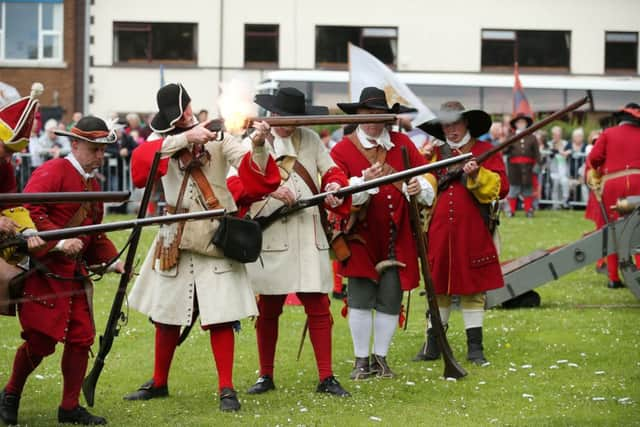Williamite army was once spreadacross local area prior to battle


While the main focus of the army was south of this area, the presence of William’s troops was familiar to local families prior to the famous battle.
Many were, of course, not present to see the troops, as women and children had been sent to Scotland in some cases along the Antrim coast as the conflict with the Jacobites intensified.
Advertisement
Hide AdAdvertisement
Hide AdOthers had taken up arms against James II and had moved to the north-west, where they augmented the forces around Londonderry in 1689.
Archibald Edmonstone of Redhall in Ballycarry was one of the local landowners to do so, taking supporters from the area with him. He later died at Culmore outside the city during one of the engagements.
However, in the winter of 1689 the area around Carrickfergus, which had been the site of a Jacobite garrison, was firmly in Williamite hands.
The Duke of Schomberg, William’s commander, had successfully laid siege of the castle at Carrick in 1689 and captured the citadel after seven days.
Advertisement
Hide AdAdvertisement
Hide AdBy the following June, William would arrive with more troops, but in the meantime those already in Ulster found camps for the winter, waiting better weather to resume their campaign.
We know that in this area there were a number of locations used.
The Royal Regiment of Dragoons was believed to have been stationed at Islandmagee, while the Danish Guards were at Doagh, Rashee, Ballycarey (believed to be Ballycarry) and other locations, Prince Frederick’s Regiment were at Larne, Kilwaughter and Cairncastle, and Colonel Bellasy’s (which became the Cheshire Regiment) was at Carrickfergus and Ballymena.
The historical record tells us that Colonel Earle’s regiment were in the Sixmilewater, while other units of William’s army were across Ulster, including in Donegal and Monaghan, North Antrim and Newry. Conditions may not have been so good for many; it was reported in October 1689 that at Dundalk the tents or huts which were erected were far from waterproof and the men slept on beds of ferns or rushes. The sanitary conditions were appalling and not surprisingly, disease soon started to take a toll. Fever and dysentery spread and at one point 1,500 men were ill and being attended by one doctor and nine men. In November 1689, the camp was broken up and the army spread to different towns. By June they were preparing to march south.